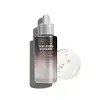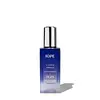What's inside
What's inside
 Key Ingredients
Key Ingredients

 Benefits
Benefits

 Concerns
Concerns

 Ingredients Side-by-side
Ingredients Side-by-side

Water
Skin ConditioningPentylene Glycol
Skin ConditioningPropanediol
SolventGlycerin
HumectantOryza Sativa Extract
AbsorbentButylene Glycol
HumectantAmmonium Acryloyldimethyltaurate/Vp Copolymer
Zanthoxylum Piperitum Fruit Extract
Skin ConditioningPulsatilla Koreana Extract
Skin ConditioningUsnea Barbata Extract
Aspergillus Ferment
Skin ConditioningCyclodextrin
AbsorbentPanax Ginseng Root Extract
EmollientPhyllostachys Pubescens Shoot Bark Extract
Skin ConditioningSodium Hyaluronate
HumectantXanthan Gum
EmulsifyingDipotassium Glycyrrhizate
HumectantAdenosine
Skin ConditioningDisodium EDTA
Mannitol
HumectantSodium Chloride
MaskingRice Sh-Oligopeptide-1
Skin ConditioningChlorella Vulgaris Extract
Skin ConditioningMadecassoside
AntioxidantDisodium Phosphate
BufferingRice Sh-Polypeptide-1
HumectantCynanchum Atratum Extract
Skin ConditioningSodium Phosphate
BufferingPotassium Phosphate
BufferingPotassium Chloride
Water, Pentylene Glycol, Propanediol, Glycerin, Oryza Sativa Extract, Butylene Glycol, Ammonium Acryloyldimethyltaurate/Vp Copolymer, Zanthoxylum Piperitum Fruit Extract, Pulsatilla Koreana Extract, Usnea Barbata Extract, Aspergillus Ferment, Cyclodextrin, Panax Ginseng Root Extract, Phyllostachys Pubescens Shoot Bark Extract, Sodium Hyaluronate, Xanthan Gum, Dipotassium Glycyrrhizate, Adenosine, Disodium EDTA, Mannitol, Sodium Chloride, Rice Sh-Oligopeptide-1, Chlorella Vulgaris Extract, Madecassoside, Disodium Phosphate, Rice Sh-Polypeptide-1, Cynanchum Atratum Extract, Sodium Phosphate, Potassium Phosphate, Potassium Chloride
Water
Skin ConditioningGlycerin
HumectantButylene Glycol
HumectantAlcohol
AntimicrobialSorbitol
Humectant1,2-Hexanediol
Skin ConditioningCaprylic/Capric Triglyceride
MaskingMethyl Gluceth-20
HumectantDimethicone
EmollientPropanediol
SolventAmmonium Polyacryloyldimethyl Taurate
Emulsion StabilisingCholesterol
EmollientMannitol
HumectantEthylhexylglycerin
Skin ConditioningAdenosine
Skin ConditioningAsiaticoside
AntioxidantMadecassic Acid
Skin ConditioningBeta-Glucan
Skin ConditioningDextrin
AbsorbentTheobroma Cacao Extract
Skin ConditioningCrithmum Maritimum Callus Culture Filtrate
Skin ProtectingAcetyl Tetrapeptide-11
Skin ConditioningTocopherol
AntioxidantWater, Glycerin, Butylene Glycol, Alcohol, Sorbitol, 1,2-Hexanediol, Caprylic/Capric Triglyceride, Methyl Gluceth-20, Dimethicone, Propanediol, Ammonium Polyacryloyldimethyl Taurate, Cholesterol, Mannitol, Ethylhexylglycerin, Adenosine, Asiaticoside, Madecassic Acid, Beta-Glucan, Dextrin, Theobroma Cacao Extract, Crithmum Maritimum Callus Culture Filtrate, Acetyl Tetrapeptide-11, Tocopherol
 Reviews
Reviews

Ingredients Explained
These ingredients are found in both products.
Ingredients higher up in an ingredient list are typically present in a larger amount.
Adenosine is in every living organism. It is one of four components in nucleic acids that helps store our DNA.
Adenosine has many benefits when used. These benefits include hydrating the skin, smoothing skin, and reducing wrinkles. Once applied, adenosine increases collagen production. It also helps with improving firmness and tissue repair.
Studies have found adenosine may also help with wound healing.
In skincare products, Adenosine is usually derived from yeast.
Learn more about AdenosineButylene Glycol (or BG) is used within cosmetic products for a few different reasons:
Overall, Butylene Glycol is a safe and well-rounded ingredient that works well with other ingredients.
Though this ingredient works well with most skin types, some people with sensitive skin may experience a reaction such as allergic rashes, closed comedones, or itchiness.
Learn more about Butylene GlycolGlycerin is already naturally found in your skin. It helps moisturize and protect your skin.
A study from 2016 found glycerin to be more effective as a humectant than AHAs and hyaluronic acid.
As a humectant, it helps the skin stay hydrated by pulling moisture to your skin. The low molecular weight of glycerin allows it to pull moisture into the deeper layers of your skin.
Hydrated skin improves your skin barrier; Your skin barrier helps protect against irritants and bacteria.
Glycerin has also been found to have antimicrobial and antiviral properties. Due to these properties, glycerin is often used in wound and burn treatments.
In cosmetics, glycerin is usually derived from plants such as soybean or palm. However, it can also be sourced from animals, such as tallow or animal fat.
This ingredient is organic, colorless, odorless, and non-toxic.
Glycerin is the name for this ingredient in American English. British English uses Glycerol/Glycerine.
Learn more about GlycerinMannitol is a sugar alcohol. It is a humectant and moisturizes the skin. In vitro (not tested on a living organism), mannitol displays antioxidant properties.
When found in aqueous solutions, mannitol tends to become acidic. This is because it loses a hydrogen ion. This is why mannitol can often be found with pH adjusting ingredients, such as sodium bicarbonate.
Fun fact: Mannitol can be found in foods as a sweetener. It can be naturally found in mushrooms, algae, fruits, and veggies.
Learn more about MannitolPropanediol is an all-star ingredient. It softens, hydrates, and smooths the skin.
It’s often used to:
Propanediol is not likely to cause sensitivity and considered safe to use. It is derived from corn or petroleum with a clear color and no scent.
Learn more about PropanediolWater. It's the most common cosmetic ingredient of all. You'll usually see it at the top of ingredient lists, meaning that it makes up the largest part of the product.
So why is it so popular? Water most often acts as a solvent - this means that it helps dissolve other ingredients into the formulation.
You'll also recognize water as that liquid we all need to stay alive. If you see this, drink a glass of water. Stay hydrated!
Learn more about Water